Ever since Monopoly was released in 1933 it has had a profound impact on the board game industry. It regularly is one of the highest selling board games every single year. Not surprisingly a lot of companies have tried to cash in on its popularity over the years. Most companies basically copy Monopoly and change the theme and maybe slightly tweak a couple of the rules. Then there are the occasional games that try to parody Monopoly. One of those games is the 1965 game Go For Broke. While the goal in Monopoly is to try and bankrupt the other players, in Go For Broke you are actually trying to bankrupt yourself. That is an interesting theme for a board game and actually has some promise in my opinion. I didn’t have high expectations for Go For Broke though because it just looked like another typical roll and move game. While Go For Broke’s theme is interesting and good for a few laughs, the gameplay gets dull and repetitive way too quickly which ruins the game.
Note: As was pointed out in a comment it turns out that there are two different board games released under the title of Go For Broke. It seems like the Selchow & Righter version of the game is different from the Milton Bradley version of the game. Therefore this review is based off of the Selchow & Righter version of the game.
How to Play Go For Broke
Setup
- Place the gameboard on the table. Each player chooses a color and places the corresponding pawn on the start space.
- Each player receives money from the bank as follows: 10-$1,000, 8-$5,000, 5-$10,000, 4-$50,000 and 7-$100,000.
- Shuffle the stock cards and deal four cards to each player. Each player turns their stock cards face up.
- Shuffle the spend and receive decks separately and place them on the corresponding spots on the gameboard.
- All of the players roll the dice. Whoever rolls the highest gets to start the game.
Playing the Game
A player begins their turn by rolling the dice and moving their playing piece the corresponding number of spaces clockwise around the gameboard. If a player’s piece lands on a space occupied by other players, the player who just moved pays $10,000 to each player who is on the space.
The player will then take an action based on the space they landed on. If a player rolls doubles they first take the action of the space they landed on. The player then gets another turn. A player can only earn one additional turn by rolling doubles.
$ Space: The player who lands on this space must swap spaces with another player. Only the current player takes the action of the space they moved to.
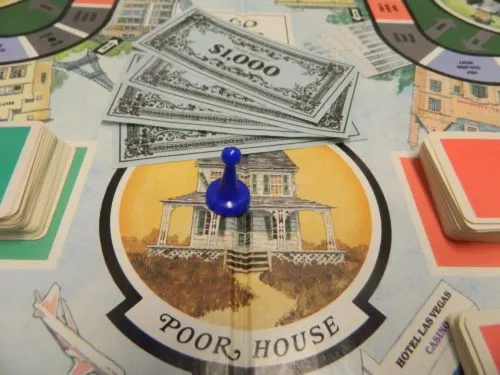
This player has landed on the poor house so they get to collect all of the money currently on the poor house.
The Poor House: During the game players will pass a space that says “Donate $1,000 as you pass”. When players pass this space they will donate $1,000 to the poor house.
When a player is forced to go to the poor house, they will collect all of the money that has been placed on the poor house in past turns. The player does not take money that is added to the poor house after they have moved to the space. On the player’s next turn they will roll the dice to move out of the poor house.
Spend and Receive Cards: When a player lands on a space that requires them to take a spend/receive card they take one of the corresponding cards. They read the card and pay or receive the corresponding amount of money from the bank.
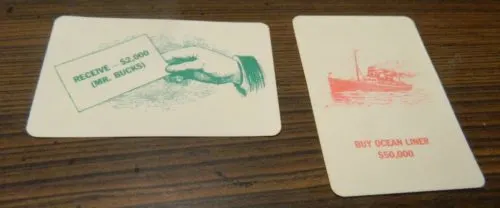
If a player draws the card on the left they will receive $2,000 from the bank. If a player draws the card on the right they will pay $50,000 to the bank.
Real Estate: When a player lands on a real estate space they pay the corresponding amount of rent to the bank.
Casino: When a player lands on a casino space they move their playing piece to the casino on the gameboard. The player then must play three different casino games (see the casino section for details). After playing the casino games the player’s turn ends and they move out of the casino on their next turn.
Racetrack: When a player visits the racetrack they have the option to bet on a horse race. The player can bet between $1,000 and $20,000 on one of the four horses. All of the other players can also bet on the horse race but they can’t bet on the horse chosen by the player who visited the racetrack. The player who visited the racetrack then spins the spinner. The horse that the spinner lands on wins the race and the player(s) who bet on that horse consult the chart below to see how much money they won. All other players lose their bet to the bank.
- Horse 1: Receive the amount you bet back.
- Horse 2: Receive twice what you bet.
- Horse 3: Receive three times what you bet.
- Horse 4: Receive five times what you bet.
Stock Market
When a player lands on the stock market they will spin the stock market spinner. If the spinner lands on a stock down space, the players who own a share of the corresponding stock will pay $20,000 to the bank for each share of the stock that they own. If the spinner lands on a stock up space, the players who own a share of the corresponding stock will receive $10,000 from the bank for each share of the stock that they own. If the spinner lands on an “extra dividend” space every player will receive $15,000 for each share of stock that they own.
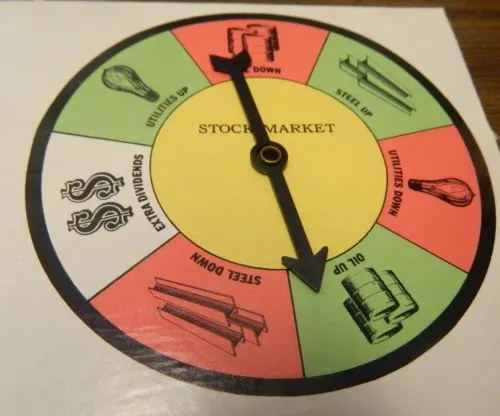
Since “oil up” was spun on the spinner, each player will receive $10,000 from the bank for each share of oil that they own.
Casino
When a player enters the casino they will play the following three games.
Slot Machine: The player pays $5,000 to the bank. The player then spins the slot machine spinner three times.
The player consults the following chart with the symbols they spun. If they rolled any of these combinations they win the corresponding amount of money.
- 3 Go For Brokes-$200,000
- 3 Bells-$160,000
- 3 plums-$120,000
- 3 oranges-$80,000
- 3 cherries-$60,000
- 3 lemons-$40,000
- 2 cherries and 1 lemon-$40,000
- 2 cherries and 1 bar-$20,000
- 2 cherries and 1 bell-$20,000
- 2 cherries and 1 plum-$20,000
- 2 cherries and 1 orange-$20,000
For the combinations with two different symbols, the two cherries have to be spun first in order to win the money.
Roulette: The player pays $10,000 to the bank. The player then chooses a number between 1 and 36. The player spins the spinner. If the number spun is the number chosen, the player wins $150,000. Otherwise the player receives nothing.
Go For Broke: The player rolls both dice. If neither dice is a one, the player will pay $1,000 times the total rolled to the bank. The player can then choose to either quit or keep rolling the dice. The player will keep paying money to the bank until they quit or they roll a one on either dice. When a player rolls a one they will receive $10,000 from the bank (the player does not take back the money already paid to the bank). If the player rolls two ones they will receive $50,000 from the bank.
End of Game
The game ends when one of the players have run out of money and can’t fully pay a bill they incur. This player has won the game.
My Thoughts on Go For Broke
The first thing everyone is going to notice when they start playing Go For Broke is the theme. It is kind of hard not to notice a theme of trying to lose all of your money. The theme feels like a parody of most board games including Monopoly where the objective is trying to make as much money as possible while trying to bankrupt the other players. That theme makes sense because most people try to acquire as much money as possible. Meanwhile the theme of trying to lose all of your money doesn’t really make any sense. If you were giving your money away to charities or other worthy causes it would maybe make some sense but the game basically has you trying to throw away your money as quickly as possible.
While the theme makes no sense I have to say that it is probably the best part of the game. You might question why you are trying to lose money and will likely forget that fact from time to time. For some odd reason though the idea of trying to lose all of your money is actually kind of fun. I think this mostly comes from the fact that the game pretty much plays like a parody of your typical board game. You usually want to avoid spaces where you have to pay money but in Go For Broke you are actively seeking out those spaces. I play most board games pretty conservatively and yet Go For Broke encourages you to be foolish with your money since you want to lose it after all. For example I usually avoid the gambling portions in board games since you usually end up losing money. I welcomed them in this game though as they were the best way to lose money. You can actually get quite a few laughs out of the game when players who are trying to lose money end up winning money.
The biggest problem with Go For Broke is that the enjoyable experience doesn’t last long. At first the parody nature of the game is clever and fun. The problem is that the game gets dull pretty quickly. While it is kind of fun at first trying to lose all your money, it shortly becomes a repetitive slog to the end. When the theme starts to wear off you are left with what Go For Broke is at its core, a generic dull roll and move game.
The theme tends to get repetitive quickly due to the lack of actual mechanics in the game. You pretty much just roll dice and spin spinners. You roll the dice to move around the board and then follow the directions on the space you land on. This usually leads to you either paying/receiving money, drawing a card, or more rolling/spinning. This process is repeated over and over again until one player eventually loses all of their money and wins the game.
With such basic gameplay it should not be surprising that the game doesn’t have a lot of decision making. Basically the only decision making in the game comes from gambling. In the casino game Go For Broke and the racetrack you have to make decisions that actually have an impact on the game. In Go For Broke you need to decide when you want to stop. There is not a lot of intuition that you can use to make this decision. You basically have to guess when you are going to roll a one. You should keep rolling the dice until you get to this point since the longer you roll the more money you will lose.
I think the most interesting decision in the game comes from the racetrack. First you have to decide how much you want to bet. Personally I think you are best off trying to bet on every race as you need to take every opportunity you can to try and lose money. Unless you think you are going to win I would also suggest betting close to $20,000 as you will usually lose. The more interesting decision is deciding which horse to bet on. I actually want to give the designers credit here as they were pretty clever on how they designed the horse race. All of the horses have different odds of winning the race and thus pay out at different rates. You could choose horse three or four that have less chance of winning but they pay out a lot more. Otherwise you could choose horse one or two which have a better chance of winning but don’t pay out as much. Personally I think betting on horse one is a no brainer. If you bet on horse one the worse that can happen is you win your money back. You have everything to gain and nothing to lose. If someone else chooses horse one though the decision becomes much more interesting.
With such a lack of decision making it forces Go For Broke to mostly rely on luck. There is really no strategy you can employ in Go For Broke that is going to help you win the game. You just need to hope that you land on the rights spots, draw the right cards and roll/spin well. The reliance on luck becomes even more important due all of the spaces on the board not being created equally. Many of the spaces on the board and the cards have a minimal impact on the game. Losing $1,000 is not going to make much of an impact when you have to lose $1 million. On the other hand there are spaces where you can lose $100,000. Landing on these spaces gives you a huge advantage in the game. Other than those spaces you likely will lose most of your money at the casino and racetrack. Basically whichever player lands on these spaces the most is likely going to win the game.
One thing I found a little odd when I was playing Go For Broke is the fact that the game is designed in a way where you end up skipping over a majority of the board. In the game I played I would say none of the players moved through a fourth to half of the board. The reason this happens is that the board has so many spaces that take you to one of the other spaces on the board. When you are sent to the casino, racetrack or poor house you end up skipping over half of the board. Since you regularly land on these spaces it is improbable that you will ever move over certain parts of the gameboard. While this doesn’t drastically impact the game I honestly can’t tell you what happens on about a quarter of the board because none of the players ever moved through that part of the board.
Go For Broke was never going to be a great game but I think it could have been salvaged if it wasn’t for the length. The game just takes way too long if you play by the normal rule of starting with $1 million. While you will steadily lose money in the game, you will occasionally encounter a situation where you will earn a large amount of money resetting a lot of your progress. The only way to make real progress in the game is to keep landing on the spaces that let you lose $100,000+. After about an hour most of the players in the game I played still had almost half of their money remaining. The good news is that it is actually quite easy to adjust the length of the game just by reducing the amount of money that you start the game with. I would suggest at least reducing the starting money to $500,000 or the game will take forever to finish.
When you get to the components things don’t get a lot better. The components aren’t terrible but they also feel kind of cheap. The artwork is fine if not a little on the bland side. The cards and the spinner are made of pretty thin cardboard though. The components do their job but they don’t really do anything that gets you more into the game either.
With all of these things taken into consideration I have to say that Go For Broke is probably one of the worst Monopoly style games that I have played. Whatever your thoughts are of Monopoly, it still gives you some opportunities to make decisions that will actually impact the game. Decisions are almost non-existent in Go For Broke. You can make a few decisions in the gambling aspects of the game but they don’t have a huge impact on the outcome of the game. This lack of decision making is the reason why Go For Broke is worse than a lot of the Monopoly style games that I have played in the past. That is not to say it is the worst Monopoly style game that I have ever played because that title goes to Public Assistance. Go For Broke might not be very fun but at least it isn’t offensive like Public Assistance.
I would like to end by talking about the fact that this review is based on the 1985 version of the game. I bring this up because there have actually been quite a few different versions of the game made over the years. Generally when a game is reprinted there aren’t significant changes to the game so it doesn’t really matter which version of the game you play. In some cases though the newer versions of a game are worse as the publisher tries to streamline the game and removes something that fans of the game like. While I haven’t played a newer version of the game it actually sounds like Go For Broke might actually be the opposite. I am not exactly sure what changes were made to the game but there are several commentators on Board Game Geek that mention that the newer versions of the game are superior to the older versions. If anyone knows of any significant differences between the different versions of the game I would love to hear about them in the comments. One thing I can say for certain is that the component quality of the newer versions are superior to the older versions of the game.
Should You Buy Go For Broke?
Go For Broke immediately jumps out as not your typical board game. The idea of a board game where you are trying to lose all of your money is a far departure from most board games where you are trying to make as much money as possible. While the theme doesn’t make any sense it actually makes for an interesting gameplay experience. Playing Go For Broke feels like a parody of board games and it is actually kind of fun trying to lose all of your money as quickly as possible. The problem is that feeling is short lived as the game quickly becomes boring and repetitive. You end up basically doing the same things over and over again until someone runs out of money and wins the game. All of the game’s problems can be traced back to the fact that you make very few decisions in the entire game. Your fate relies almost entirely on luck as the few decisions you actually get to make don’t have a significant impact on the game. When you add in that the game takes way too long, Go For Broke ends up being a boring experience.
If you don’t like roll and move games you are not going to like Go For Broke. Even if you like roll and move games it might not be for you as there are a lot of games like Go For Broke that are more enjoyable. I would probably only recommend picking up Go For Broke if you really like the concept of trying to lose all of your money and you can find the game for cheap.
If you would like to purchase Go For Broke you can find it online: Amazon (1965), Amazon (1985)
, Amazon (1992)
, Amazon (2006)
, eBay

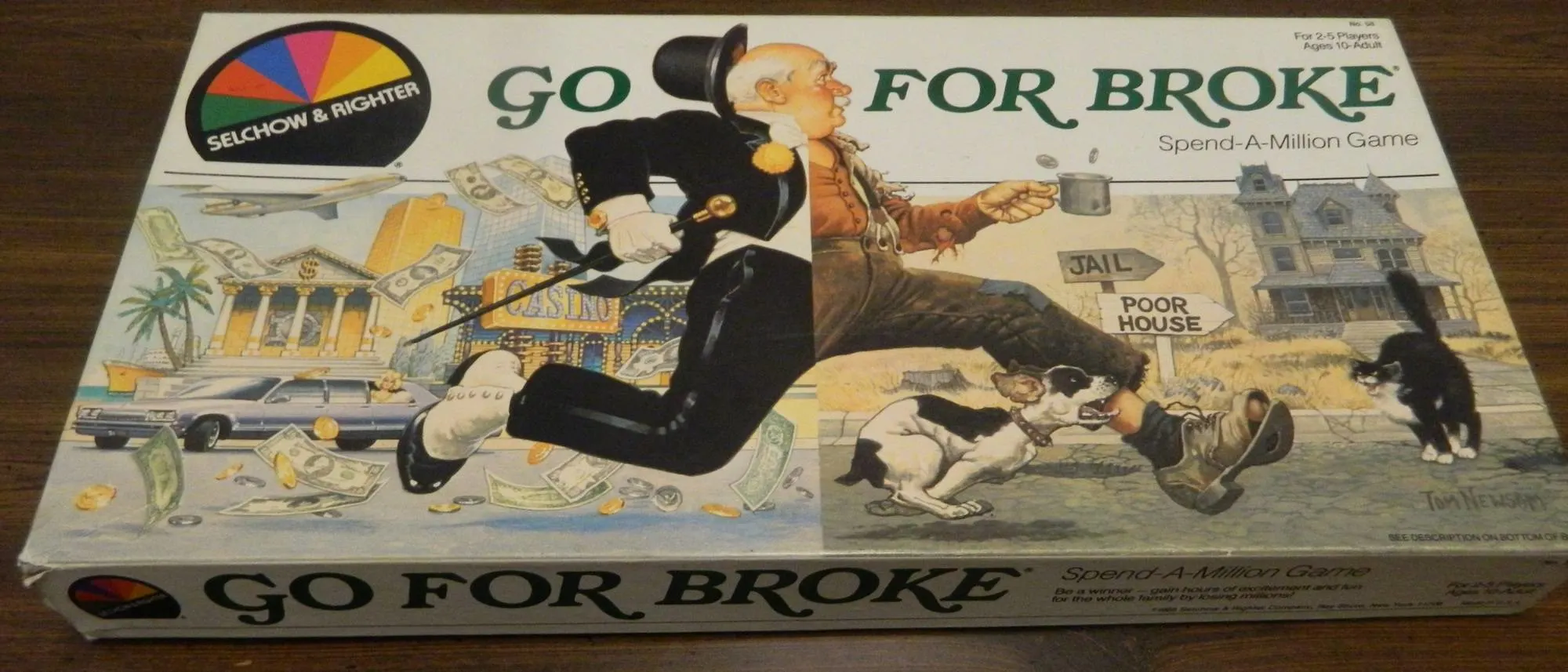
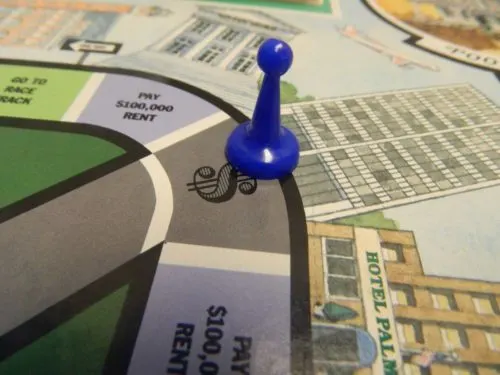
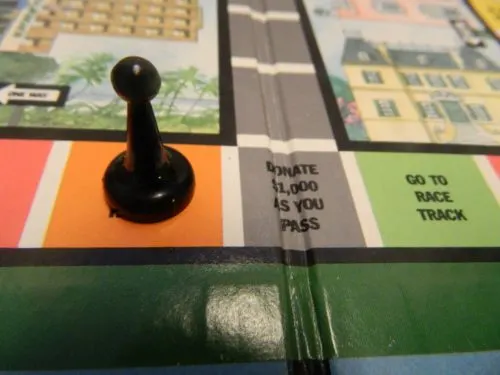
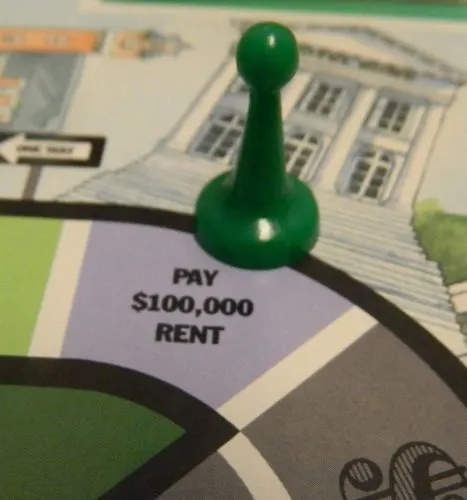
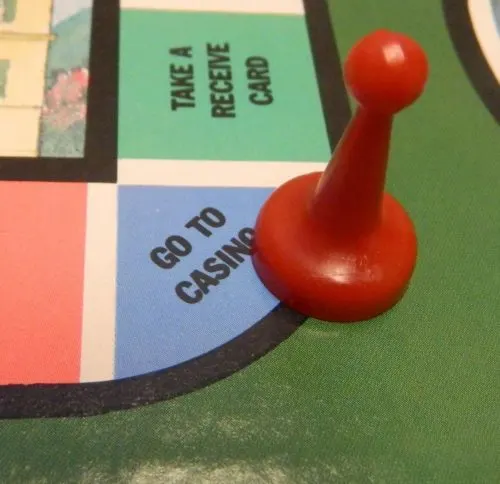
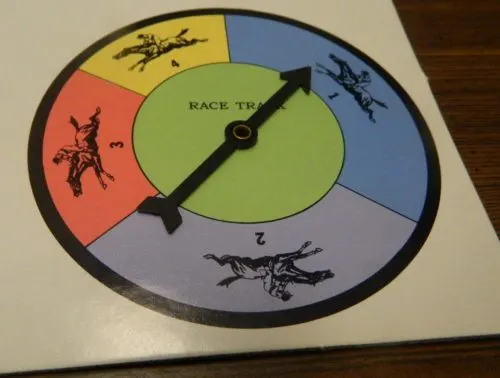
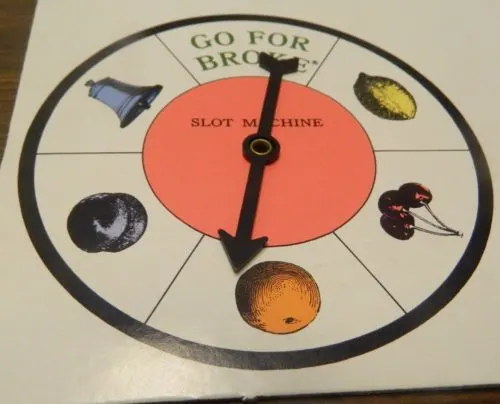
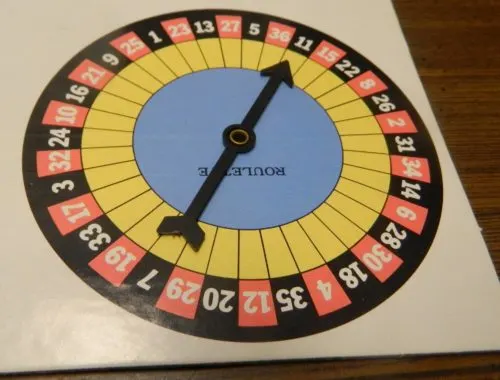
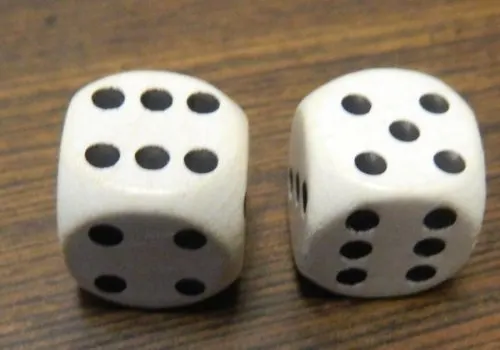
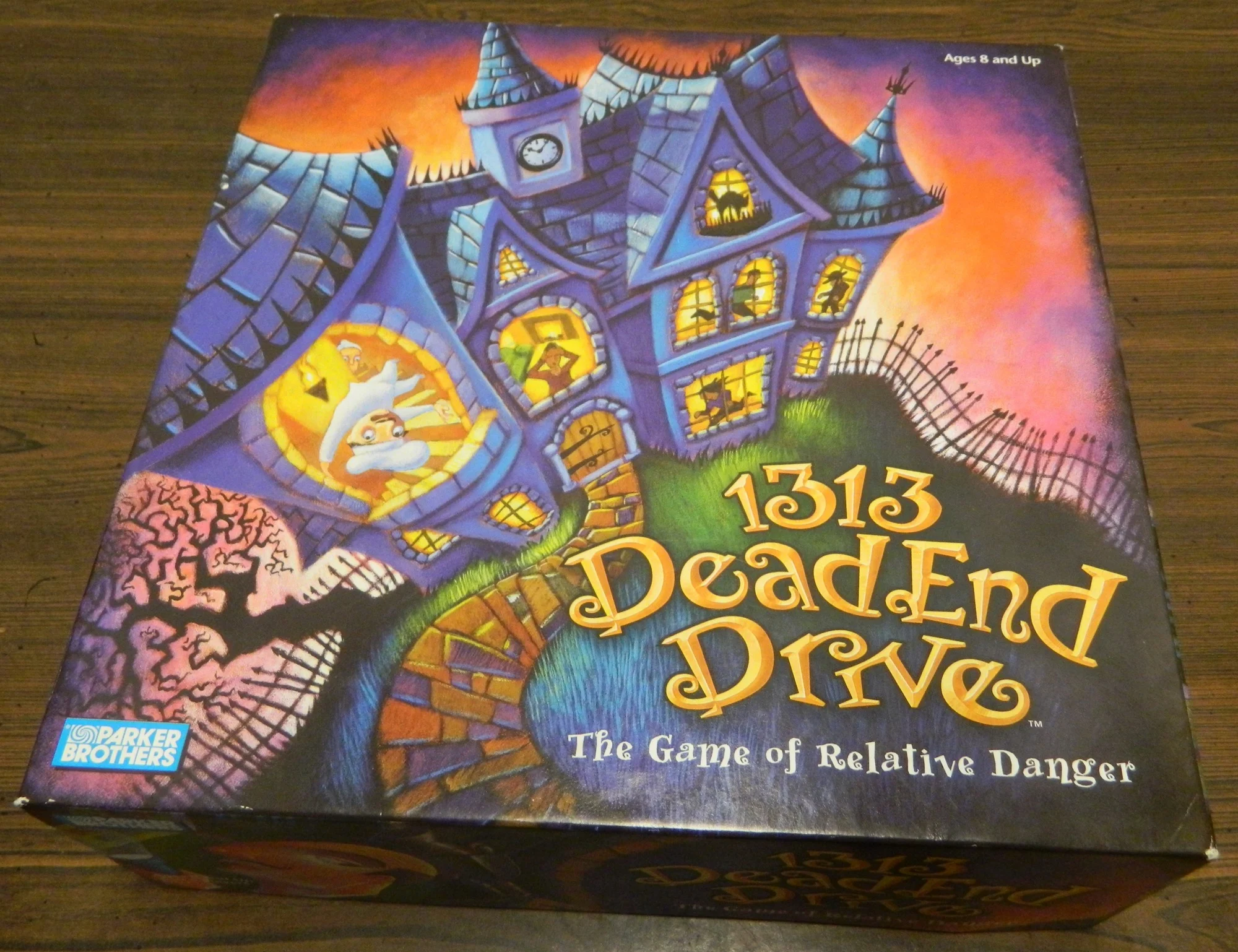
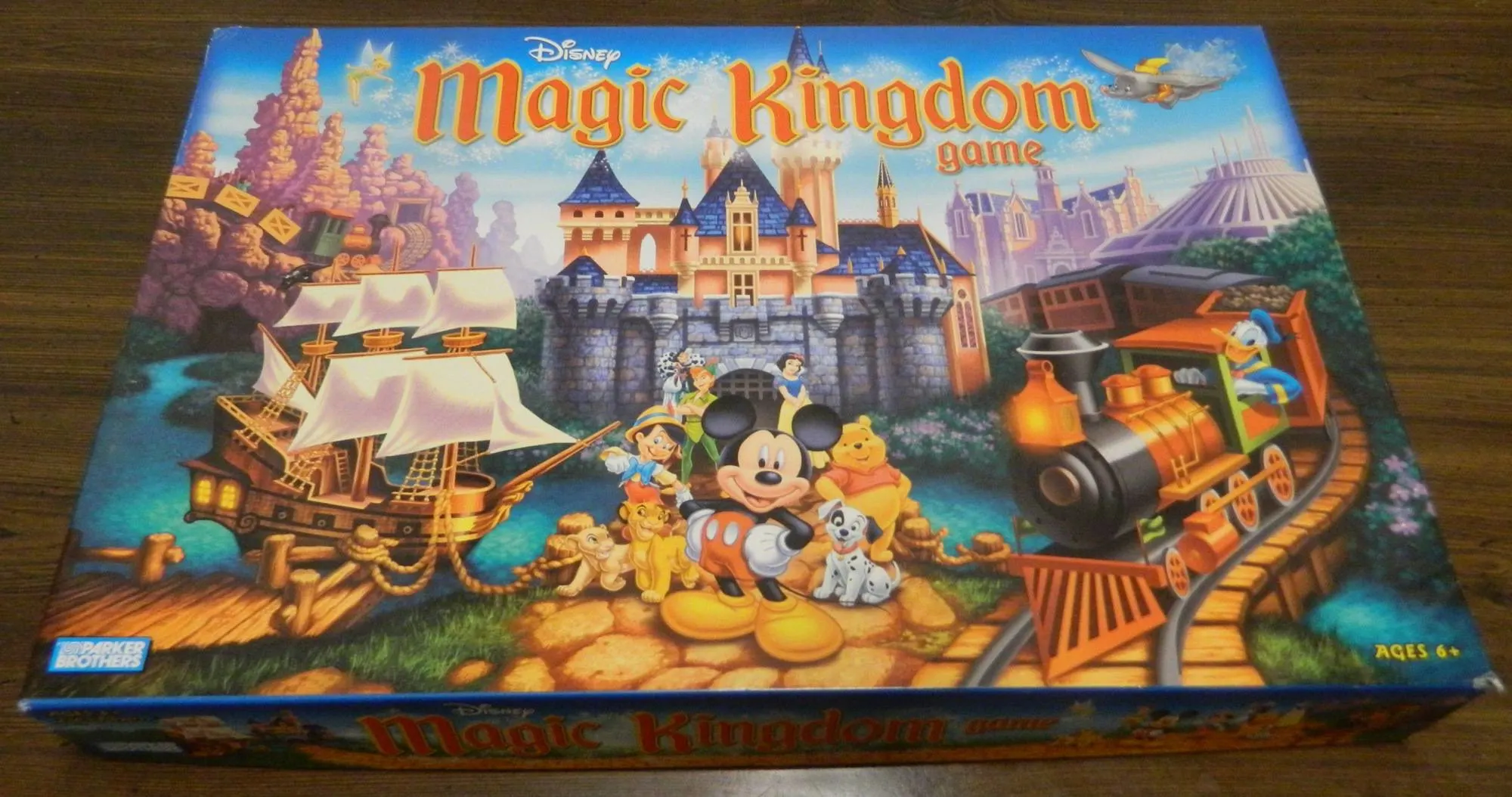
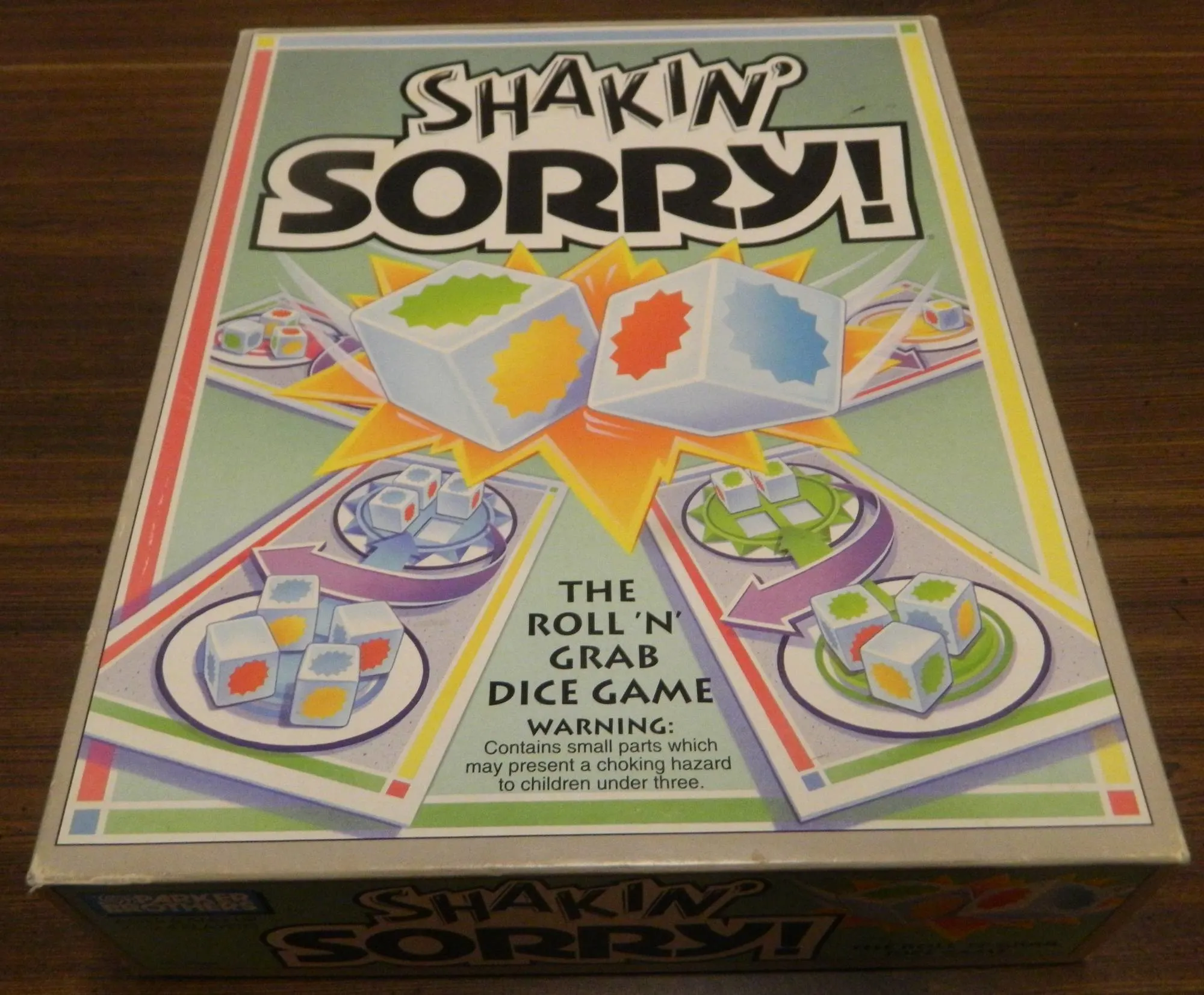
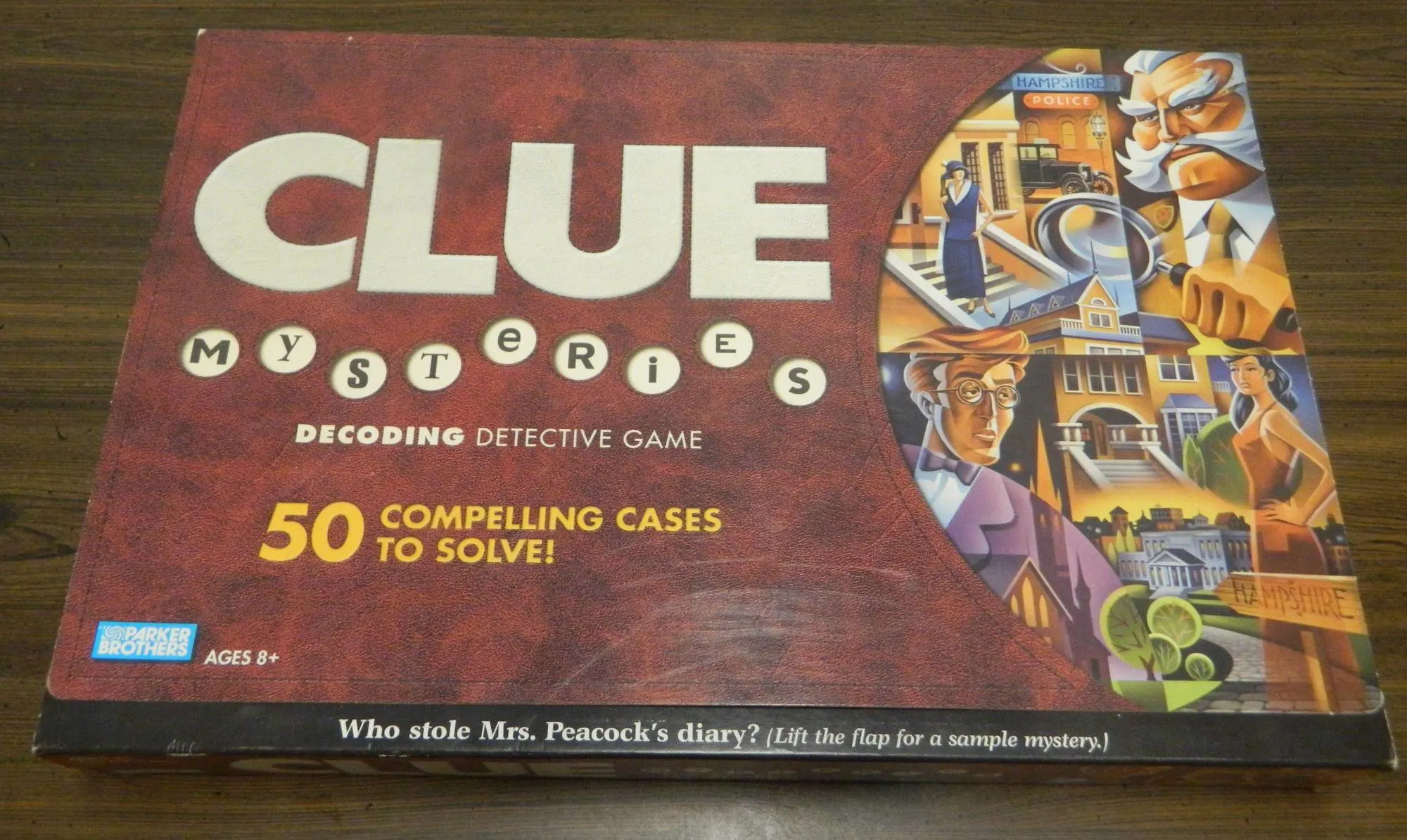
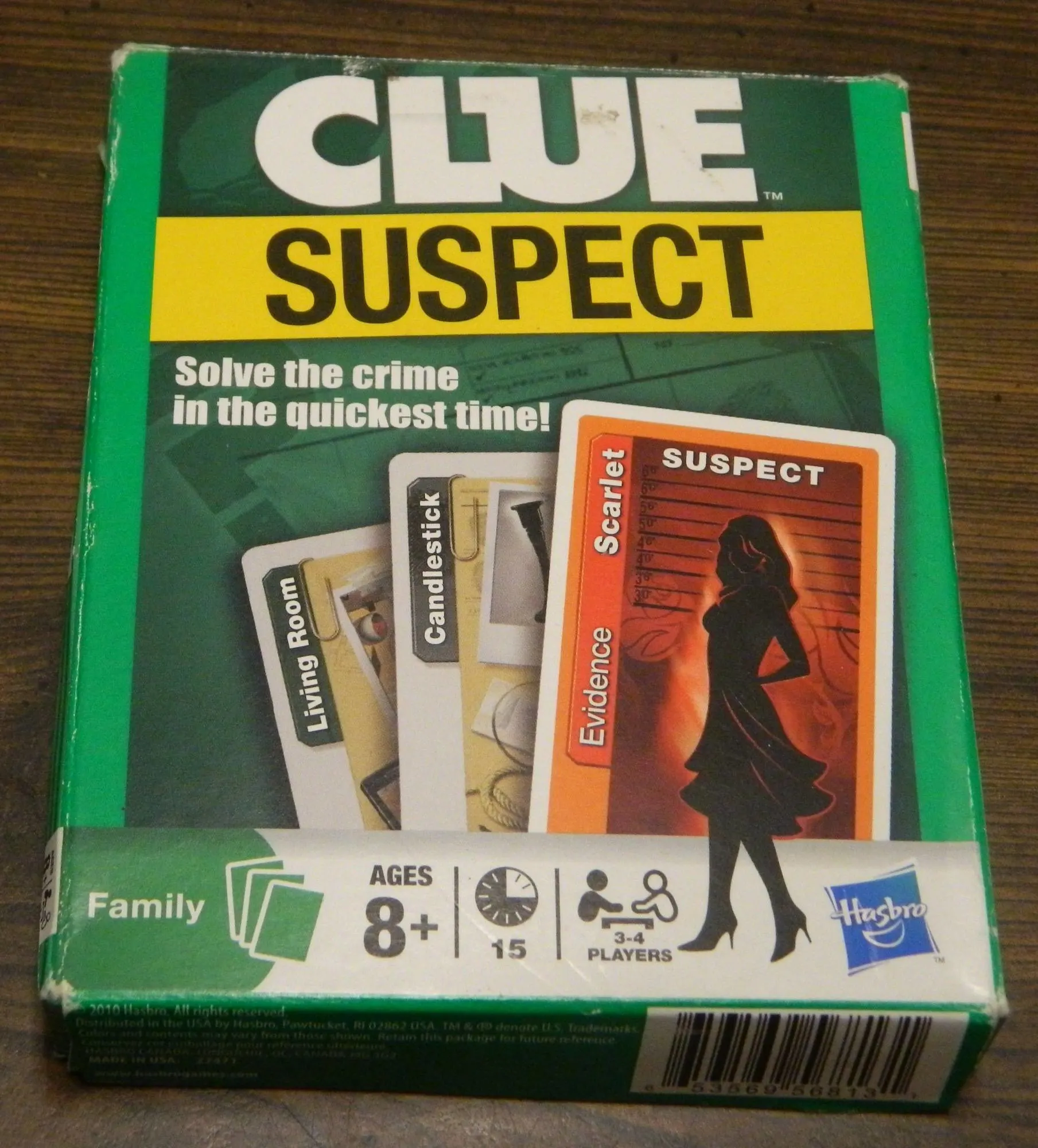
Jonathan Becker
Monday 7th of December 2020
You reviewed the older version of Go For Broke from S&R(1965) , not the newer version from MB (1985, 2005) as you said you did. It obvious from the picture this is the original version, even if it was produced in 1985. I know, because our company and founder James Becker of Anjar represented S&R, and licensed a NEW & IMPROVED VERSION of Go For Broke to MB, released in Europe only in 1985. if you had reviewed the 2005 edition, you'd understand why it's been the subject of fantastic reviews by the top game Reviewers. you need to correct your facts - you didn't review the newer version - Finally, Another Major factual error: Dan Glimne DIDN'T Design Go For Broke; he was 5 years old when it was released in 1965. Get your facts straight. just because Boardgamegeek is wrong too, no excuse to spread nonsense. The real inventors don't appreciate it. NEWS FLASH: A brand new version of GFB is being released in Europe in 2021!
Eric Mortensen
Monday 7th of December 2020
I was honestly unaware that there was two different versions of Go For Broke. The version I reviewed was from 1985, but it must have been the Selchow & Righter version. I wasn't trying to claim that I played the newer version of the game as I honestly thought they were the same game outside of some changes to update the game to the present day. I apologize if this lead to confusion.
Generally Board Game Geek does a good job breaking out different games of the same name that actually have significant differences in gameplay. They clearly must have made a mistake with this game. I have played and reviewed around 800 different board games (many created before I was even born) so I am not going to be an expert about the background information of every game I review. In particular the Go For Broke that I reviewed was made before I was even born so there was no way I could have any information about it outside of what came with the game and what I can find online.
I have made a note that are two distinct versions of Go For Broke at the beginning of the review to try and clarify this fact.
As for the designer I apologize for the mistake. Most games made before the 1990s rarely credit the actual designer of the game (at least in the United States). I like to give credit to the people responsible for designing games as the original publishers rarely did. As they are rarely credited in the games though there is no way for me to know who to credit. The version of the game that I played never credited the original designer. For this reason I generally refer to sites like Board Game Geek as they sometimes know who designed a game when credit wasn't given. As you clarified I credited the wrong designer so I removed it for this review. I wasn't trying to misinform anyone or steal someone's credit for designing the game as I was actually trying to give credit to a designer that didn't receive the credit they deserved from the publisher.